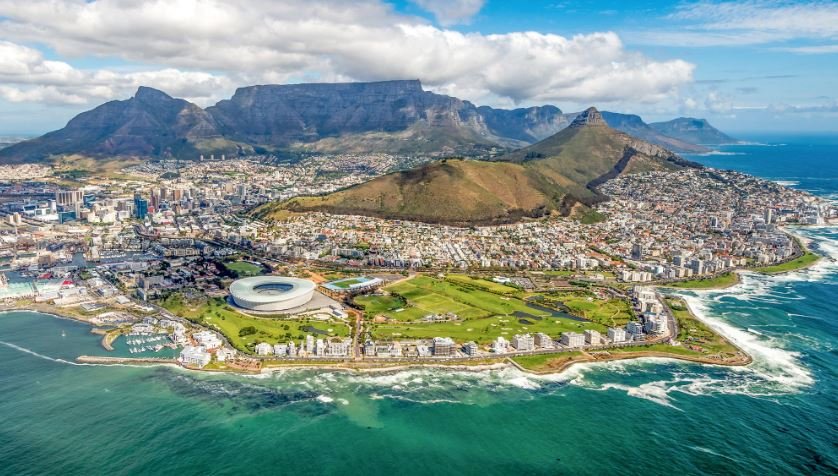This guide ranked Africa’s top 10 biggest cities according to their population.
READ ALSO: Top 10 Historical Sites In Nigeria And Their Location
Rank | City | Country | Population (millions) |
|---|---|---|---|
1 | Lagos | Nigeria | 9 |
2 | Kinshasa | Democratic Republic of the Congo | 7.8 |
3 | Cairo | Egypt | 7.7 |
4 | Alexandria | Egypt | 3.8 |
5 | Abidjan | Côte d'Ivoire | 3.6 |
6 | Kano | Nigeria | 3.6 |
7 | Ibadan | Nigeria | 3.5 |
8 | Cape Town | South Africa | 3.4 |
9 | Caserblanca | Morocco | 3.1 |
10 | Durban | South Africa | 3.1 |
READ ALSO: Who Built Central Mosque Abuja
1. Lagos, Nigeria – 9.0 million
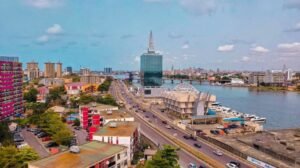
Lagos is the largest city in Nigeria and Africa as of 2024. It has a population of around 9 million people, making it the most populated city in Africa by population.
Located in the southwestern part of Nigeria, Lagos sits by the Atlantic Ocean and covers an area of about 1,171 square kilometers.
The city is made up of several local government areas, including Ikeja, Surulere, Agege, and Ikorodu, as well as islands like Victoria Island and Banana Island.
Lagos was the capital of Nigeria until 1992, but even after the capital moved to Abuja, Lagos remained the country’s commercial hub.
It is a key city for trade and serves as a gateway to West Africa. Lagos is known for its busy streets, vibrant markets, and diverse population.
The city has many important facilities, such as general hospitals, police stations, and courts, which are present in each local government area.
People from Lagos are called Lagosians, and the city has several nicknames, such as “Eko akete” and “Lasgidi.” Despite its size, Lagos is a lively and growing city, attracting people from all over Nigeria and beyond for business and opportunities.
2. Kinshasa, Democratic Republic of the Congo – 7.8 million
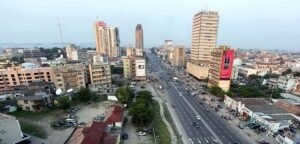
Kinshasa is the capital city of the Democratic Republic of the Congo and the second-largest city in Africa. Kinshasa has a population of about 7.8 million people, making it the second largest city in Africa after Lagos in Nigeria.
Kinshasa is also a province in the country. This city is located on the Congo River, right across from Brazzaville, the capital of the Republic of Congo. These two cities are the closest capitals in the world, separated only by the river.
However, Kinshasa was founded in 1881 by Henry Morton Stanley, who named it Léopoldville after King Léopold II of Belgium.
This was when the Congo Free State was under the control of Belgium. The city grew because it was the first navigable port on the Congo River after the dangerous Livingstone Falls.
In the past, goods had to be carried by people between Léopoldville and the town of Matadi, but later, a railway was built to make transportation easier.
In 1966, the city’s name was changed from Léopoldville to Kinshasa, which comes from a nearby village called Nshasa or Kinshasa.
READ ALSO: Top 10 Largest City In West Africa By Population
3. Cairo, Egypt – 7.7 million
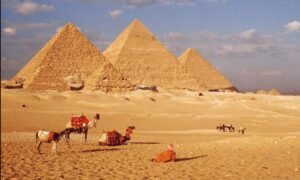
Cairo is the third largest city in Africa by population. It is the capital of Egypt and has a population of about 7.9 million people in the city itself. The urban area of Cairo is even larger, with around 17.3 million people living there.
This makes Cairo not only the biggest city in Egypt but also the largest urban area in Africa and the Arab world. Cairo is located along the Nile River. It was founded in 969 CE by the Fatimid dynasty and became an important cultural and political center.
The city is known for its historical landmarks, such as the Al-Azhar Mosque, one of the oldest universities in the world, and the Egyptian Museum, which houses ancient artifacts, including treasures from King Tutankhamun’s tomb.
Also, the city is famous for its proximity to the Great Pyramids of Giza, one of the Seven Wonders of the Ancient World.
Cairo is nicknamed “The City of a Thousand Minarets” because of its many mosques. However, Cairo has a hot desert climate, with high temperatures and little rainfall throughout the year.
Despite the heat, the city is vibrant and full of life, offering visitors a mix of ancient history and modern culture. People from Cairo are called “Cairenes,” and the city continues to be a key hub for tourism, education, and trade in Africa and the Middle East.
4. Alexandria, Egypt – 3.8 million
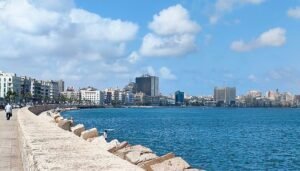
Alexandria, Egypt, is the fourth largest city in Africa, with a population of 3.8 million people. It is Egypt’s second-largest city after Cairo and serves as the country’s main port.
Located on the Mediterranean Sea, it is about 225 kilometers (140 miles) northwest of Cairo. Alexandria was founded by Alexander the Great in 331 BC and was once a major center of culture, science, and trade.
In ancient times, Alexandria was the capital of the Ptolemaic dynasty and home to the famous Library of Alexandria, which held countless ancient texts.
The city was also a hub for Greek scholars like Euclid and Eratosthenes. During the Roman Empire, Alexandria was a big part of shipping Egyptian grain to Rome.
However, much of the ancient city sank into the Mediterranean Sea in the 4th century. After the Muslim conquest in 641 AD, Alexandria lost its status as Egypt’s capital.
The new capital, Fustat, was built farther inland to avoid naval attacks. While Alexandria became less political, it remains an important economic and cultural city today.
The city has two airports and three large stadiums, including Borg el-Arab Stadium. It also hosted the fourth Wikimania conference in 2008.
READ ALSO: List Of Ministers Of State For Agriculture And Food Security In Nigeria (2015-Present)
5. Abidjan, Côte d’Ivoire – 3.6 million
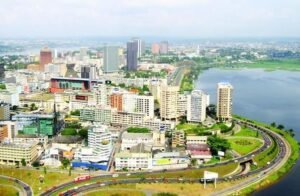
Abidjan, located in Côte d’Ivoire (Ivory Coast), is the fifth largest city in Africa by population, with about 3.6 million people living in the city and 4 to 5 million in the greater metropolitan area.
It is the largest city in the country and serves as the commercial and banking hub, even though Yamoussoukro is the official capital.
Abidjan is often referred to as the de facto capital because most government offices and foreign embassies are still based there.
The city sits along the Ébrié Lagoon and is known for its unique layout, with many peninsulas and islands connected by bridges. This makes it one of the most beautiful urban areas in West Africa.
Abidjan’s history is closely tied to its economic development. The city began to grow in 1931, after the construction of a new wharf. It became the capital of the French colony in 1933, helping it grow into a major port and trade center.
Even after Yamoussoukro was named the capital in 1983, Abidjan continued to thrive as the country’s main economic center.
6. Kano, Nigeria – 3.6 million
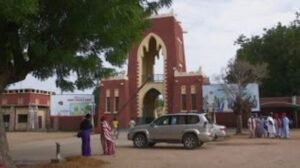
Kano, Nigeria is one of the largest cities in Africa, located in the northern part of the country. It is the capital of Kano State and is the second-largest city in Nigeria, after Ibadan and Lagos, with a population of about 3.6 million people as of 2024.
The city has been a key trade hub for centuries, especially for goods like gold, leather, ivory, salt, and groundnuts. It was founded around the year 1000 A.D. as a city of the Hausa people.
Over time, Kano grew into a powerful emirate, and by the 14th century, it had become wealthy through trade. It was also a strong center of Islam in the region, with one of Nigeria’s finest mosques located in the city.
In addition, Kano is a major center for education and transportation. Bayero University is located there, and the city has a railway station that connects to major cities like Lagos and Port Harcourt.
Kano also has an international airport. The City is famous for the Kano River Project, which is a large irrigation project that helps support farming in the region.
7. Ibadan, Nigeria – 3.5 million
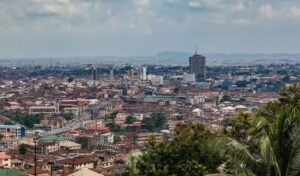
Ibadan is a large city in southwestern Nigeria, with a population of about 3.5 million people. It is the capital of Oyo State and the third most populous city in Nigeria, following Lagos and Kano.
Ibadan is also the largest city in the country by land area, covering 3,080 square kilometers (1,190 square miles). During British colonial rule, it was the center of administration for the old Western Region.
Many of the city’s ancient protective walls are still visible today. The majority of people in Ibadan are Yoruba, but there are also many people from other parts of Nigeria.
Geographically, Ibadan is located about 119 kilometers (74 miles) northeast of Lagos. The city is near the edge of the tropical forest zone, which gradually transitions into the savanna.
It is surrounded by five main rivers: the Ona River in the north and west, the Ogbere River in the east, the Ogunpa River through the city center, the Kudeti River, and the Osun River to the east. There is also Lake Eleyele in the northwest.
READ ALSO: List Of Sultans Of Sokoto From 1817 Till Date
8. Cape Town, South Africa – 3.4 million
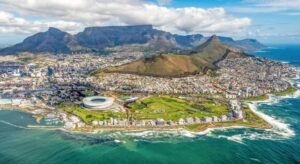
Cape Town is the second-largest city in South Africa, and the eighth-biggest City in Africa, with a population of about 3.4 million. It is located on the southwest coast of the country, at the Cape of Good Hope.
The city is known for its stunning natural features, especially Table Mountain, which has a flat top and can be seen from many parts of the city.
Cape Town enjoys a warm-summer Mediterranean climate, making it a popular destination for both locals and tourists. It is also home to the country’s Parliament.
The city was originally known as the “Cape of Storms” by Portuguese explorer Bartolomeu Dias in 1486. However, King John II of Portugal later renamed it the “Cape of Good Hope.”
The city was established in 1652 as the center of the Dutch Cape Colony. It has developed into one of Africa’s most popular and diverse cities.
9. Casablanca, Morocco – 3.1 million
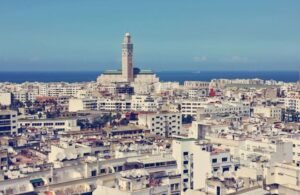
Casablanca is the largest city in Morocco, located on the Atlantic Ocean in the western part of the country. The City has a population of about 3.1 million, making it one of the largest cities in Africa.
Casablanca is known for its beautiful coastline and modern infrastructure, and it plays a big part in Morocco’s economy and culture.
The city’s name, “Casablanca,” comes from the Spanish word for “white house,” and it is sometimes referred to by its classical Arabic name, “الدار البيضاء” (pronounced as “Al-Dar Al-Bayda”), which also means “the white house.”
Casablanca is a major center for trade, industry, and tourism in Morocco. The city is home to the busiest port in Africa. Casablanca enjoys a Mediterranean climate with hot, dry summers and wet, rainy winters.
This weather makes it a pleasant destination for tourists, especially those who enjoy its warm weather. The city is also famous for its cultural landmarks, like the Hassan II Mosque, which is one of the largest mosques in the world.
10. Durban, South Africa – 3.1 million
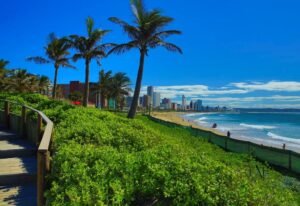
Durban is one of the largest cities in South Africa, located in the province of KwaZulu-Natal. With a population of about 3.4 million in its metropolitan area, Durban is the second-largest city in South Africa as of 2024, following Cape Town.
The city’s population in 2011 was 595,061 for the city itself, with a much larger population when including the surrounding areas.
Durban is notable for its beaches, warm weather, and as a key port city in South Africa. It plays a major part in the country’s economy, with a GDP of about 63.9 billion US dollars.
The city’s racial makeup includes Black Africans, Indians/Asians, Coloureds, and Whites, with the majority speaking English and Zulu.
With early inhabitants arriving thousands of years ago, today, Durban is a hub for trade, tourism, and culture. Some famous landmarks in the city are Ushaka Marine World, the Moses Mabhida Stadium, and the Suncoast Casino.
Durban also has sister cities around the world, including Alexandria in Egypt, Chicago in the United States, and Rio de Janeiro in Brazil.

